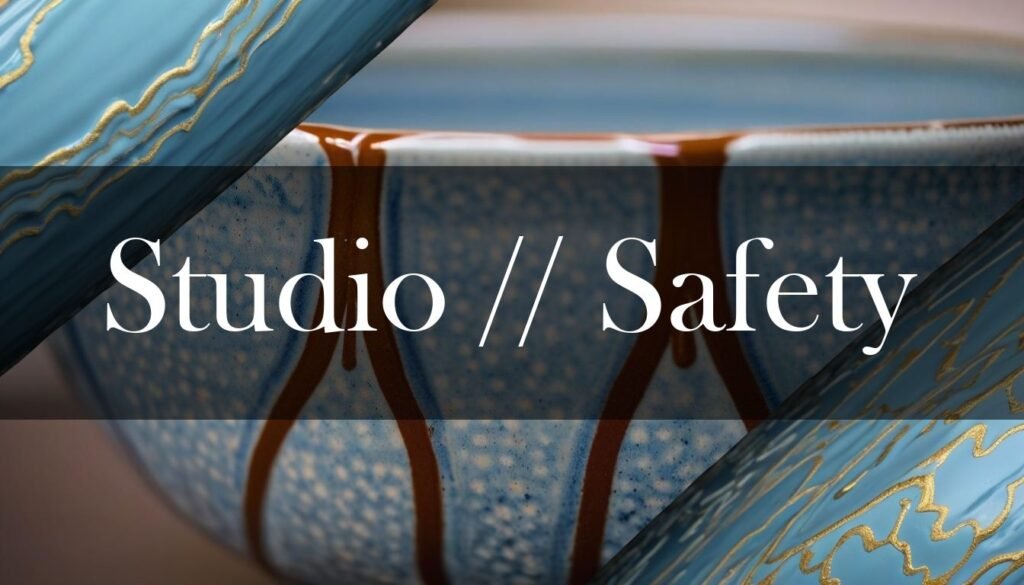Stepping into a pottery studio should be an act of creative joy, a chance to mold earth into something beautiful and functional. However, it’s also essential to be aware of the potential health and safety hazards lurking amidst the clay and glaze. Prolonged exposure to silica dust is one of the most significant risks in pottery studios. Inhaling those fine particles can lead to silicosis, a debilitating lung disease characterized by inflammation and scarring. Silicosis comes in different forms, from chronic, which develops over many years, to acute, which can manifest rapidly after intense exposure. Symptoms include shortness of breath, coughing, fatigue, and chest pain. But the dangers don’t stop there; silica exposure can also lead to COPD, asthma, and even increase the risk of lung cancer and fungal infections like aspergillosis. Autoimmune diseases such as nephritis, scleroderma, and lupus have also been linked to silica exposure.
To combat these risks, creating a well-ventilated studio is paramount. For larger studios, industrial dust extraction systems are incredibly effective. These systems range from compact filters suitable for small machine groups to rotary valve, bag filter, worm filter, and chain filter systems designed for larger installations. These systems ensure that particulate matter is captured before it can compromise the air quality. For smaller studios, high-efficiency air purifiers can do wonders. Models like the Rabbit Air BioGS 2.0, Winix 5500-2, and LEVOIT Core 400S are designed to capture fine dust particles, odors, and allergens, keeping the air clean and breathable. You can also look into eco-friendly and sustainable practices for your pottery studio.
“A well-ventilated studio and proper respiratory protection are the first line of defense against silica exposure.”
Beyond ventilation, respiratory protection is key. While N95 respirators offer a basic level of protection, P100 respirators are more effective, filtering out 99.97% of airborne particles. For more comprehensive protection, half-facepiece and full-facepiece respirators provide a better seal and can be fitted with specialized filters. Powered Air-Purifying Respirators (PAPRs) take it a step further, using a battery-powered blower to supply filtered air, enhancing comfort during long hours of use. Equally important is how you handle and dispose of glaze materials. Always wear nitrile or latex gloves to protect your skin and safety glasses to shield your eyes. When mixing or spraying glazes, a good-quality mask or respirator is essential to avoid inhaling harmful particles. Proper storage means labeling containers clearly and keeping powders in airtight containers. Never pour glaze materials down the drain; instead, allow them to evaporate and dispose of the solid residue properly. If a glaze contains toxic substances like lead or cadmium, it must be handled as hazardous waste according to local regulations. For more information, consider reading about pottery studio safety in depth.
- Always wear safety gear.
- Never pour glaze materials down the drain.
- Ensure proper storage of materials.
Lastly, it’s crucial to familiarize yourself with the legal regulations and guidelines in your area. In the UK, the Health and Safety at Work etc. Act 1974 and the Control of Substances Hazardous to Health Regulations 2002 (COSHH) set the standards for workplace safety, requiring risk assessments, control measures, and proper training. The Health and Safety Executive (HSE) provides specific guidance for pottery production, emphasizing the control of hazardous substances and the safe operation of kilns. In the U.S., OSHA standards and the CPSC’s Art and Craft Safety Guide offer recommendations for safe practices, including ventilation, PPE, and material handling. By staying informed and proactive, we can ensure our pottery studios are safe, inspiring places where creativity can flourish without compromising our health.





